
Military Uniform Manufacturer With Over 30 Years of OEM Experience
One of the leading manufacturers and suppliers of military uniforms in China. As professional China military uniforms, we can produce military uniforms, military clothing, military boots, safety jackets, army bulletproof, etc.
Military Uniform Manufacturer
China’s Reliable Military Uniform Supplier
We are the manufacturer and supplier of military uniforms in China, for our military products are used primarily in the army and police. We have our own military uniform factory that can produce different types of military uniforms, such as combat uniforms, army uniforms, safety vests and safety jackets, and more. For our military products, we have EN and ISO certifications, which can guarantee high quality.
Military Uniform Factory
For the military uniform can meet CE EN standards, all military products style can be printed with your own logo on the clothing and packing, with different colors available.
Why Choose Us
A: Fast delivery time,we are professional manufacturer for military uniforms, there are 200 workers in our factory, with daily output of 5000 sets.
B: Free sample,you can get free sample to check the quality.
C: Customer first,our company will bear the loss if there is something wrong with the quality.
D: OEM service,we can produce the goods according to clients’ requirements.
E: Welcome to use trade assurance, sales service: Beijing time from 8.am to 10.pm. online. Respond to enquiries within 12 hours.
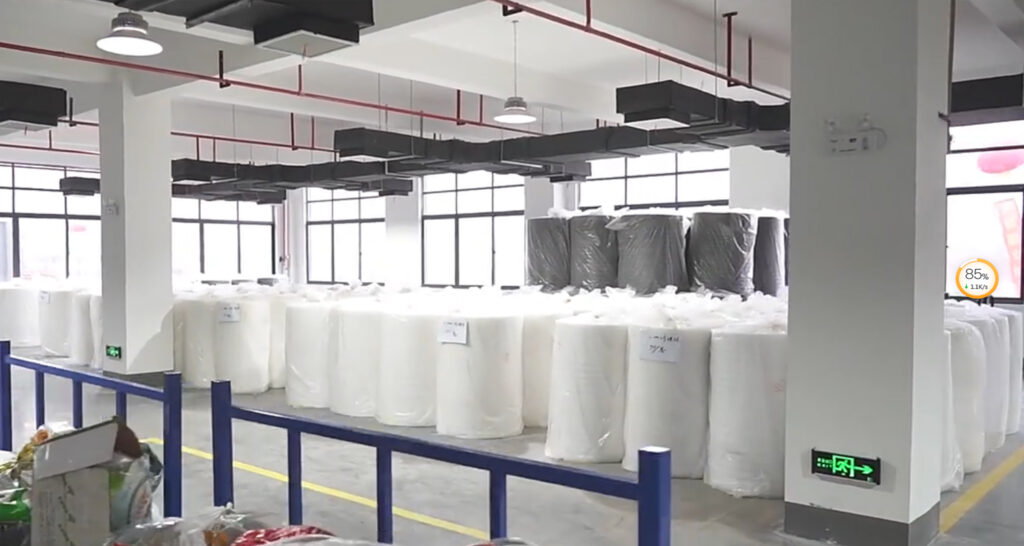
Raw material of military products: tc6535 fabric, which has the characteristics of tear resistance and wear resistance.

Military uniform manufacturing: high cutting precision and high production efficiency.

A large inventory of fabrics, webbing, buckles, other accessories and skilled workers to ensure stable quality and short production time.

We offer a large variety of military surplus stocks that can meet different procurement needs.
Our Certificate
We have CE SGS certificate for military uniform, Almost all of our safety coverall meet EN quality requirements.




We are a reliable safety equipment supplier and manufacturer in China, we have exported different military uniforms to more than 30 countries, such as USA, Germany, the UK, Greece, France, Austria, the Middle East, and Africa.
We specialize in OEM services for safety helmets, body harnesses, military uniforms and military boots, and standard safety vest. we can add your logo to the military products. But please note for our MOQ usually is 1000pcs per style. If your quantity does not meet the MQO, we will not be able to supply you.
Introduction:
In the realm of modern warfare, military camouflage stands as a crucial line of defense, serving to shield armed forces and their assets from prying enemy eyes. Beyond its utilitarian function of concealment, camouflage patterns woven into uniforms play a multifaceted role, encompassing tasks such as differentiation on the battlefield, fostering a sense of camaraderie, and amplifying the spirit of the armed forces. This article delves into the intricate world of military camouflage, exploring its diverse functions and significance on and off the battlefield.
The Essence of Military Camouflage:
At its core, military camouflage is an artful blend of science and design. Its primary objective is to thwart enemy observation, rendering personnel and equipment inconspicuous within their operational surroundings. The camouflage’s color palette, patterns, and textures work in harmony to create an illusion that hinders detection and recognition. Such concealment is not limited to visual perception but often extends to infrared and thermal detection, adding a layer of protection.
Multiple Functions of Textile Patterns:
Uniform textile patterns are imbued with a spectrum of functions, each serving a distinct purpose:
Camouflage: The primary goal of military uniforms is to enable troops to blend seamlessly into their environment, diminishing the chances of detection by enemy forces. These patterns are meticulously designed to complement various terrains, from lush forests to arid deserts.
Identification: Beyond concealment, uniforms facilitate the rapid and accurate identification of comrades. The strategic placement of insignias, patches, and badges communicates ranks, roles, and affiliations, streamlining communication and enhancing coordination.
Esprit de Corps: Uniforms serve as a unifying thread, weaving individuals into a cohesive military unit. The visual harmony of uniforms fosters a sense of belonging, pride, and unity, bolstering morale and teamwork.
Psychological Impact: The attire worn by soldiers carries symbolic weight. Military uniforms exude professionalism, discipline, and commitment, not only influencing how soldiers perceive themselves but also how they are perceived by the public.
The Unseen Artistry of Design:
Behind the scenes, designers, textile experts, and military strategists collaborate to craft effective camouflage patterns. These patterns are meticulously tailored to specific operational contexts, capitalizing on the interplay of colors and shapes that trick the eye and blur outlines. The process involves a delicate balance between aesthetics and functionality, ensuring that the final pattern is both visually appealing and tactically efficient.
The Emblematic Multicam Pattern:
One notable example is the Multicam pattern, hailed for its adaptability across diverse environments. Its success lies in its ability to harmonize with surroundings while evading various forms of detection. Widely embraced by armed forces worldwide, the Multicam pattern showcases the fusion of innovation and practicality, exemplifying how modern camouflage is a marriage of technology, psychology, and design.
Conclusion:
Military camouflage transcends mere aesthetics, embodying a strategic blend of concealment, identity, and unity. As armed forces navigate complex terrains and adversaries, the camouflage patterns on their uniforms become an integral aspect of their arsenal. Beyond the tactical advantages, these patterns symbolize the unwavering dedication, solidarity, and pride that define the essence of military service.
What are the army uniforms called?
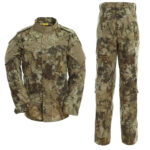
The uniforms worn by army personnel are commonly referred to as “Army uniforms.” These uniforms are specifically designed and standardized clothing worn by members of the army for various purposes, each serving a unique role in enhancing operational effectiveness and addressing the specific needs of soldiers. Here’s a detailed explanation of the various purposes served by army uniforms:
Identification: Army uniforms play a crucial role in identifying soldiers as members of a particular military force. The design, color, patches, and insignia on the uniform help distinguish soldiers from other branches of the military and signify their allegiance to a specific unit or division. This aids in maintaining order, discipline, and a sense of belonging within the military ranks.
Rank Differentiation: The insignia and markings on army uniforms indicate the rank and position of the wearer within the hierarchy. This allows for quick recognition of leadership roles, facilitating efficient communication and decision-making on the battlefield and within the military establishment.
Functional Attire: Army uniforms are tailored to meet the functional requirements of soldiers in diverse activities and environments. Different types of uniforms are designed for various conditions, such as combat uniforms for field operations, dress uniforms for formal occasions, and specialized uniforms for specific roles like pilots or medics. These uniforms are equipped with features like pockets, pouches, and attachment points to carry essential gear and equipment.
Ceremonial and Formal Functions: Dress uniforms are worn during ceremonial events, official functions, and parades. These uniforms are often more elaborate and adorned with medals, badges, and other decorative elements. They symbolize honor, tradition, and the dignity of military service.
Adaptation to Environments: Army uniforms are designed with camouflage patterns to help soldiers blend into various terrains and environments, enhancing concealment and reducing the risk of detection by adversaries. Camouflage patterns are tailored to specific geographic regions, such as desert, woodland, or urban environments.
Protection and Safety: Modern army uniforms are constructed from durable and functional fabrics that provide protection against environmental elements, such as extreme weather conditions, chemical exposure, and fire hazards. Specialized uniforms may also offer ballistic protection and flame resistance to ensure the safety of soldiers in combat situations.
Psychological Impact: Uniforms contribute to the psychological impact of soldiers on both allies and enemies. They instill a sense of discipline, professionalism, and unity among troops. Additionally, well-designed uniforms can have a psychological effect on adversaries by intimidating or confusing them in combat scenarios.
Equipment Integration: Army uniforms are designed to integrate seamlessly with various military equipment, including body armor, helmets, web gear, and load-bearing vests. This integration ensures that soldiers can effectively carry and access their essential equipment while maintaining mobility and comfort.
In conclusion, “Army uniforms” encompass a range of specialized clothing designed to fulfill multiple purposes, from identification and rank differentiation to functional requirements and environmental adaptation. These uniforms are not only essential for soldiers’ performance but also serve as symbols of military pride and tradition.
What are the army combat uniform called?
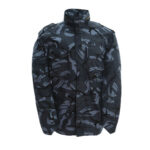
The army combat uniform is commonly referred to as the “ACU” or “Army Combat Uniform.” It is the standard combat and field uniform worn by soldiers of the United States Army. The ACU is designed for use in various operational environments, providing soldiers with functional and practical attire for combat and tactical activities. It is characterized by its digital camouflage pattern, which helps soldiers blend into different terrains and provides effective concealment on the battlefield. The ACU includes features such as integrated pockets, hook-and-loop fasteners for attaching patches and insignia, and compatibility with equipment like body armor and load-bearing vests. It is a versatile and adaptive uniform that enhances soldiers’ effectiveness and protection during combat operations.
Which Army uniform is best?

The determination of the “best” army uniform can vary based on factors such as the specific needs of the military, the operational environment, and the intended purpose of the uniform. Different uniforms are designed to serve different functions and scenarios. For example:
Combat Uniforms: Uniforms like the United States Army Combat Uniform (ACU) or the British Army’s Multi-Terrain Pattern (MTP) uniform are optimized for combat and tactical operations. They provide camouflage and functionality necessary for field operations.
Dress Uniforms: Dress uniforms, also known as service uniforms, are worn during formal and ceremonial occasions. These uniforms often display a nation’s military traditions, history, and rank distinctions.
Specialized Uniforms: Special forces or elite units may have uniforms designed for their unique roles and missions, such as the United States Navy SEALs or the Russian Spetsnaz.
Environmental Considerations: The best uniform may also depend on the operational environment – desert, woodland, urban, etc. – to provide effective camouflage.
Functionality and Comfort: A good uniform should also offer comfort, mobility, and functionality, allowing soldiers to perform their duties efficiently.
Technological Advancements: With advancements in fabric technology, some modern uniforms incorporate features like moisture-wicking, flame resistance, and even integrated electronics for communication and monitoring.
Ultimately, the “best” army uniform is one that effectively meets the needs of the military and its personnel in terms of functionality, comfort, protection, and adherence to tradition and identity. It’s important to note that different uniforms may excel in different aspects, and the choice often depends on a balance of these factors.
What are the classes of military uniforms?
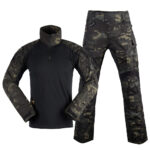
Military uniforms can be categorized into several classes based on their purpose, function, and design. Here are some common classes of military uniforms:
Combat Uniforms: These uniforms are designed for use in combat and field operations. They typically feature camouflage patterns to help soldiers blend into different environments and may include practical features such as pockets for carrying equipment.
Dress Uniforms: Dress uniforms are worn during formal and ceremonial occasions, such as parades, official events, and celebrations. They often include distinct features like medals, insignia, and rank markings to showcase a soldier’s achievements and rank.
Service Uniforms: Service uniforms are worn in non-combat situations and represent a middle ground between combat and dress uniforms. They are suitable for everyday wear on base and in various military activities.
Utility Uniforms: These uniforms are designed for practicality and comfort during everyday tasks and duties. They may include features such as reinforced knees, multiple pockets, and durable fabric.
Specialized Uniforms: Elite or specialized units may have unique uniforms tailored to their specific roles and missions. These uniforms could include additional equipment or be designed for specific environments.
Physical Training (PT) Uniforms: PT uniforms are worn during physical training and exercise activities. They are designed for comfort, breathability, and ease of movement.
Cold Weather Uniforms: These uniforms are designed to provide insulation and protection in cold weather conditions. They may include additional layers, thermal fabrics, and protective outerwear.
Hot Weather Uniforms: Hot weather uniforms are designed to keep soldiers cool and comfortable in high-temperature environments. They often feature lightweight and breathable materials.
Flight Suits: Worn by military aviators, flight suits provide protection and functionality for pilots and aircrew during flight operations.
Camouflage Uniforms: These uniforms use camouflage patterns to help soldiers blend into their surroundings and remain concealed from the enemy.
Ceremonial Uniforms: These uniforms are reserved for special ceremonies, parades, and official events. They often include ornate designs and traditional elements.
Navy and Maritime Uniforms: Naval forces have uniforms designed for shipboard operations, which may include specialized clothing for different roles.
It’s important to note that the specific classes and names of military uniforms can vary among different armed forces and countries. Each class of uniform serves a specific purpose and contributes to the overall functionality, identity, and tradition of the military.
What are the military uniforms called?

Military uniforms encompass a wide range of apparel worn by members of the armed forces. These uniforms serve various purposes, including identification, rank differentiation, protection, and functionality. They are designed for specific roles, environments, and occasions. Some of the common types of military uniforms include:
Service Dress Uniform (Class A or Dress Blues): This is a formal uniform worn during ceremonial events and official occasions. It typically includes a coat, tie, and often includes medals and decorations.
Combat Uniform (BDU or ACU): The combat uniform is designed for field and operational use. It provides camouflage and functionality with features like pockets for equipment and a durable design.
Mess Dress Uniform: Worn during formal evening events, this uniform is less formal than the service dress uniform but more formal than the combat uniform.
Utility Uniform: A functional uniform worn for everyday duties. It is comfortable and designed for various tasks.
Flight Suit: Worn by pilots and aircrew, this uniform is designed for use in aircraft and provides comfort and functionality during flight.
Ceremonial Uniform: This is worn during special ceremonies and parades. It often includes distinctive features and may vary by branch.
Physical Training Uniform: Designed for exercise and physical training, it includes comfortable and breathable clothing suitable for workouts.
Specialized Uniforms: Specialized roles, such as medical personnel or special forces, may have uniforms designed to meet their specific needs.
Camouflage Uniform: Designed for combat and field use, this uniform provides camouflage to blend in with various environments.
Navy Dress Uniforms: The naval service has its own set of uniforms, including formal dress whites and dress blues.
It’s important to note that terminology, design, and types of military uniforms can vary by country and branch. Additionally, uniforms may evolve over time to incorporate new technologies, materials, and operational requirements.
What is a military uniform meaning?
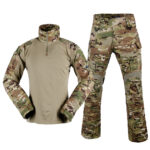
A military uniform is a standardized outfit worn by members of the armed forces, such as the army, navy, air force, or marines. It holds significant meaning beyond its practical function of clothing. Military uniforms are carefully designed and structured to serve various purposes, both functional and symbolic.
The meanings associated with military uniforms are multifaceted:
Identification: Military uniforms help distinguish between different branches of the armed forces, ranks within the military hierarchy, and roles within a unit. This identification is crucial for maintaining order and command during operations.
Unity and Cohesion: Uniforms promote a sense of unity and cohesion among military personnel. When individuals wear the same uniform, it symbolizes their shared purpose and commitment to their country and mission.
Pride and Tradition: Military uniforms often incorporate historical elements, symbols, and insignia that reflect a unit’s heritage, achievements, and values. Wearing the uniform is a source of pride and a connection to a long-standing tradition.
Discipline and Professionalism: The uniform represents the disciplined and professional nature of the military. Its standardized appearance reinforces the importance of following orders, adhering to regulations, and upholding high standards of conduct.
Respect and Authority: Military uniforms command respect and authority both within the armed forces and in civilian contexts. They signify the bearer’s role in defending the nation’s security and upholding its values.
Functional Design: Beyond symbolism, military uniforms are designed for specific tasks and environments. They provide protection, comfort, and functionality tailored to the demands of military duties.
Ceremony and Ritual: Military uniforms play a central role in ceremonies, parades, and official events. They add solemnity and significance to occasions that commemorate service, sacrifice, and achievements.
Global Recognition: Military uniforms are recognizable symbols that allow people worldwide to identify members of a country’s armed forces. They are a visual representation of a nation’s military strength and commitment.
In essence, a military uniform is not just a set of clothing; it is a representation of honor, duty, sacrifice, and dedication. It serves as a link between past, present, and future generations of servicemen and women, embodying the values and ideals of a nation’s military institution.
What is the Army dress uniform called?

The Army dress uniform is commonly referred to as the “Army Service Uniform” (ASU). It is the military formal attire worn by members of the United States Army for various ceremonial and formal occasions. The ASU is designed to reflect the professionalism and tradition of the Army and is worn to events such as official receptions, military balls, and other formal functions. The uniform includes a dark blue coat, light blue trousers or skirt, and various accessories such as a white shirt, black tie, and headgear (such as a beret or service cap). The ASU incorporates rank insignia, awards, and other decorations to signify the individual’s achievements and rank within the Army.
Who manufactures military uniforms?
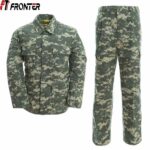
Fronter is a Chinese brand specializing in producing military uniforms and related gear. With over 30 years of experience, Fronter is known for its expertise in manufacturing high-quality military clothing using advanced materials and techniques. The company adheres to international standards such as those set by the European Union (EU) and the United States (US), and its products are used by professional buyers and government orders. Fronter’s military uniforms are designed to meet the requirements of defense departments and are crafted with attention to detail, incorporating features like special fabric for infrared reflection, water and wind resistance, tear resistance, and more. Additionally, Fronter offers customization options for colors and sizes to cater to specific needs.
Where is military clothing made?

Military clothing is made in various locations around the world, depending on the country and its manufacturing capabilities. Different countries may have their own domestic manufacturers that produce military uniforms and gear. Additionally, some countries may outsource the production of military clothing to specialized manufacturers in other countries.
For example, in the United States, military clothing is produced by both government-owned facilities and private contractors. The Defense Logistics Agency (DLA) is responsible for procuring and distributing military clothing and gear for the U.S. military. Private companies, often through competitive contracts with the government, also play a significant role in manufacturing military uniforms.
In other countries, similar arrangements exist where military clothing is produced through a combination of government-owned facilities and contracted manufacturers.
It’s important to note that the specifics of where military clothing is made can vary widely depending on factors such as national policies, trade agreements, and the availability of specialized manufacturing capabilities.
What company makes the Marines uniforms?

The official manufacturer of the United States Marine Corps uniforms is the “Marines’ Corps Combat Utility Uniform (MCCUU)” is the company “American Power Source Inc. (DBA Propper International)” which is based in St. Louis, Missouri, USA.
Who manufactures Canadian military uniforms?

The Canadian military uniforms are manufactured by a few different companies. One of the primary suppliers of Canadian military uniforms is Logistik Unicorp, a Canadian company based in Ottawa, Ontario. They are known for producing various types of uniforms and equipment for the Canadian Armed Forces.
Who makes pants for the military?
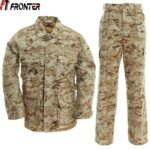
While Fronter is a Chinese brand known for producing camouflage and military-style clothing, it’s important to note that there are many manufacturers worldwide that produce pants and other clothing items for the military. The production of military clothing is typically done by a variety of companies that specialize in military and tactical apparel. Some well-known manufacturers of military pants include:
Propper: A U.S.-based company that produces a wide range of military and tactical clothing, including pants.
Tru-Spec: Another U.S.-based company known for its military and tactical apparel, including pants.
5.11 Tactical: This company specializes in tactical and outdoor gear, including pants, for military and law enforcement personnel.
Crye Precision: Known for its innovative and high-performance gear, including combat pants.
UF PRO: A European company that designs and manufactures tactical and outdoor clothing, including military pants.
Helikon-Tex: A European company offering a variety of military and outdoor clothing and equipment.
Drifire: Produces flame-resistant clothing, including pants, for military and first responders.
Beyond Clothing: Designs and manufactures technical outdoor and tactical clothing, including pants.
Who makes clothes for the Army?
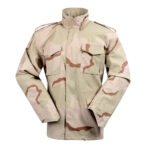
While Fronter is a Chinese brand that specializes in producing military-style clothing and camouflage, it’s important to note that there are many manufacturers worldwide that supply clothing for various armies, including the United States Army and other armed forces. The production of clothing for the army involves a diverse range of manufacturers that provide uniforms, combat gear, and other attire. Some of the well-known manufacturers that supply clothing for the army include:
American Apparel: This company provides a wide range of clothing items for the U.S. military, including uniforms and combat gear.
ADS, Inc.: A major supplier of military clothing, equipment, and tactical gear to various branches of the U.S. military.
Crye Precision: Known for its high-performance and innovative combat uniforms and gear.
Massif: Specializes in flame-resistant clothing and uniforms for military personnel.
Rothco: A supplier of military and tactical clothing and gear.
TRU-SPEC: Provides a variety of uniforms, tactical clothing, and gear for military and law enforcement.
W. L. Gore & Associates: Known for its Gore-Tex fabric technology used in military uniforms.
Polartec: Provides fabric solutions for military clothing, including insulating and moisture-wicking materials.
Patagonia: Offers various outdoor and tactical clothing and gear that are sometimes used by military personnel.
What is the military uniform fabric?

Military uniforms are typically made from a variety of specialized fabrics that are chosen for their durability, comfort, functionality, and sometimes specific technical features. The choice of fabric can vary based on the specific purpose of the uniform, the climate in which it will be worn, and the branch of the military. Some common types of fabric used for military uniforms include:
Cotton: Cotton is often used for lightweight and breathable uniforms. It is comfortable to wear and suitable for warm or temperate climates.
Polyester/Cotton Blends: These blends offer a balance between comfort and durability. They can be wrinkle-resistant and moisture-wicking, making them suitable for a range of environments.
Ripstop: Ripstop fabrics are designed to resist tearing and ripping, making them ideal for uniforms that may undergo rough use or encounters with obstacles.
Nylon: Nylon fabrics are lightweight, durable, and quick-drying. They are often used in uniforms designed for activities that require high mobility.
Gore-Tex: This waterproof and breathable fabric is often used in outer layers of uniforms to protect against harsh weather conditions.
Flame-Resistant (FR) Fabrics: These fabrics are designed to self-extinguish flames and are crucial for military personnel in situations where there is a risk of fire or explosions.
Nomex: Nomex is a type of flame-resistant fabric known for its heat resistance and is often used in uniforms for military aviation and firefighting.
Kevlar: Kevlar fabrics are used for body armor and helmets due to their high strength and abrasion resistance.
Camouflage Patterns: Many military uniforms feature specialized camouflage patterns that are designed to blend into specific environments. These patterns are often printed on various fabric types, including ripstop and nylon.
It’s important to note that different countries and military branches may have their own specifications for uniform fabrics, and technological advancements can lead to the development of new materials over time. The choice of fabric also takes into consideration factors like weight, ease of care, and cost-effectiveness.
What is the origin of the military uniform?

The origin of the military uniform can be traced back to ancient civilizations where armies began adopting standardized clothing and equipment for their soldiers. The primary purposes of these early uniforms were practicality, identification, and cohesion within the ranks. Here is an overview of the origin and evolution of military uniforms:
Ancient Civilizations: Early military uniforms were simple and functional. Ancient civilizations such as the Romans, Greeks, and Egyptians used standardized clothing and armor to distinguish their soldiers from civilians and enemies on the battlefield. Uniforms also provided protection and helped soldiers withstand the rigors of combat.
Medieval and Renaissance Periods: During the medieval era, knights and soldiers wore armor and heraldic symbols to identify themselves. As firearms became more prevalent, uniforms adapted to include protective clothing and standardized colors to differentiate between friendly and enemy forces.
17th to 18th Centuries: The evolution of firearms led to the development of more practical uniforms that focused on functionality and protection. European armies adopted distinctive colors and styles to distinguish different regiments. This period also saw the introduction of rank insignia.
Napoleonic Era: Napoleon’s military innovations included the adoption of more standardized uniforms across his armies. These uniforms were designed for easy identification and to instill a sense of unity among troops.
Industrial Revolution: The 19th century saw the influence of the Industrial Revolution on military uniforms. Mass production techniques allowed for more standardized and practical uniforms made from durable fabrics.
World Wars: The World Wars marked significant advancements in military uniform design. World War I saw the introduction of more practical and functional uniforms, while World War II introduced camouflage patterns and specialized uniforms for different environments.
Modern Era: In the post-World War II era, military uniforms continued to evolve to meet the demands of modern warfare.
Technological advancements led to the development of flame-resistant fabrics, body armor, and other specialized gear.
Cultural and Functional Factors: Military uniforms have also been influenced by cultural traditions, social status, and the specific needs of different branches of the military. Specialized uniforms are designed for different roles, such as combat, ceremonial occasions, and specialized units like airborne or naval forces.
Overall, the origin of the military uniform reflects a combination of practicality, identity, and the need for cohesion within military units. As warfare and technology have evolved, so too have military uniforms, with each era contributing to the development of the uniforms we see today.
What are the military uniform colors?
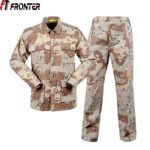
Military uniform colors vary widely based on the branch of the military, the type of uniform, and the intended purpose of the uniform. Here are some common military uniform colors and their meanings:
Camouflage Patterns: Camouflage uniforms are designed to blend into specific environments and provide concealment for soldiers. Camouflage patterns can vary greatly depending on the terrain and operational requirements. Common colors include various shades of green, brown, tan, gray, and black.
Olive Drab: This is a greenish-brown color commonly used in military uniforms, especially during the 20th century. It was widely used by many armed forces as a standard color for field uniforms.
Navy Blue: Navy blue uniforms are often worn by naval and maritime forces. They symbolize the connection to the sea and are used in various naval dress uniforms.
Air Force Blue: Different shades of blue are used in uniforms for air force personnel. These colors represent the sky and the aerial domain.
Khaki: Khaki uniforms are light tan or beige in color and are often used for dress and field uniforms. They were historically used in tropical and desert environments.
Black: Black uniforms are often worn by special forces, ceremonial units, and law enforcement within the military. Black can signify authority, professionalism, and distinction.
White: White uniforms are used for dress and ceremonial occasions. They can symbolize purity, formality, and are often worn during events such as parades and official ceremonies.
Digital Camouflage: This modern pattern consists of pixelated blocks of color and is designed for use in various terrains. The colors used can include combinations of green, brown, beige, and gray.
Desert Camouflage: These uniforms are designed for arid and sandy environments, often featuring tan and light brown shades.
Woodland Camouflage: This pattern is characterized by dark green, light green, brown, and black shades, suitable for forested environments.
Urban Camouflage: Designed for urban environments, this pattern may include grays, blacks, and other muted colors.
Specialized Units: Some specialized units may have unique uniform colors, such as maroon for airborne forces, or red for military police.
It’s important to note that uniform colors are not only chosen for their aesthetic qualities but also for their functionality and the environments in which the military operates. Different branches and units may have their own distinct color schemes based on their operational needs and traditions.
How do you iron a military uniform?

Ironing a military uniform requires care and attention to detail to ensure the uniform maintains its professional appearance. Here are the steps to properly iron a military uniform:
Check the Care Label: Before ironing any garment, including a military uniform, check the care label to ensure that it can be ironed. Some uniforms may have specific instructions regarding ironing temperature and settings.
Set Up the Ironing Area: Choose a clean and flat surface for ironing. Place an ironing board or a clean, heat-resistant surface on a stable table. Make sure the area is well-lit.
Adjust the Iron: Set the iron to the appropriate temperature based on the fabric of the uniform. For most military uniforms, a medium heat setting is suitable. Avoid using high heat to prevent scorching or damaging the fabric.
Prepare the Uniform: Ensure the uniform is clean and dry before ironing. Empty all pockets and remove any badges or patches that can be detached. Button up the uniform and straighten out the collar and sleeves.
Start with Collar and Sleeves: Begin with the collar and sleeves. Place the collar flat on the ironing board and press with the iron, moving from one end to the other. For sleeves, insert the iron into the sleeve and press from the shoulder seam to the cuff.
Iron the Body: Lay the uniform flat on the ironing board, aligning the seams. Start ironing from the shoulder area and work your way down to the hem. Use smooth, even strokes and avoid pressing too hard to prevent creating shiny spots on the fabric.
Avoid Patches and Insignia: If the uniform has sewn-on patches or insignia, avoid ironing directly over them. Iron around these areas to prevent damage.
Trouser Pressing: For trousers, start with the waistband and press each leg from the top down. Pay special attention to the creases on the front and back of the trousers.
Button and Zipper Area: Iron carefully around buttons, zippers, and other hardware. Use the tip of the iron to avoid damaging these components.
Hang Immediately: Once you’ve finished ironing, hang the uniform on a hanger to allow any residual moisture to evaporate. This helps prevent wrinkles from forming as the uniform cools down.
Storage: Store the uniform on a hanger in a clean and dry place. Avoid overstuffing the closet to prevent wrinkles.
Use a Press Cloth: If you’re concerned about direct contact between the iron and the uniform, you can place a clean cotton cloth or a press cloth between the iron and the fabric.
Remember that proper ironing techniques can vary based on the specific fabric and design of the military uniform. If you’re unsure, it’s a good idea to consult the care instructions provided with the uniform or seek guidance from someone experienced with military uniforms.
History of military uniforms?

The history of military uniforms is a fascinating journey that reflects the evolution of warfare, technology, culture, and social norms over the centuries. Military uniforms have gone through significant changes in style, function, and symbolism. Here’s an overview of the history of military uniforms:
Ancient and Medieval Periods (Pre-17th Century):
In ancient civilizations such as Rome, Greece, and Egypt, soldiers often wore distinctive clothing and armor to identify their allegiances and ranks.
Medieval knights and warriors donned suits of armor made from metal plates, chainmail, and leather for protection in battle.
Uniformity in clothing was limited, with soldiers often wearing clothing representative of their social status or regional origin.
17th and 18th Centuries:
The 17th century marked the beginning of more standardized military uniforms, influenced by the rise of professional standing armies and the need for organization.
France under King Louis XIV is credited with introducing the first recognizable military uniforms. These uniforms featured bright colors, elaborate designs, and rich fabrics to showcase the monarch’s power.
As firearms became more prevalent, uniforms began to include features such as musket-proof coats and tricorn hats.
19th Century:
The 19th century saw the introduction of more practical and functional military uniforms, influenced by the Napoleonic Wars and changing combat tactics.
British redcoats, French blue coats, and Prussian spiked helmets are iconic examples of military uniforms from this era.
The Industrial Revolution led to the mass production of uniforms, allowing for greater standardization.
20th Century:
The 20th century brought significant changes to military uniforms due to the world wars and technological advancements.
The introduction of camouflage patterns during World War I aimed to provide better concealment on the battlefield.
World War II saw the emergence of specialized uniforms for various military branches and theaters of operation.
Post-war periods led to the development of more comfortable and practical uniforms for different environments.
Contemporary Era (Late 20th Century to Present):
Modern military uniforms prioritize functionality, comfort, and adaptability. Camouflage patterns have evolved to suit different terrains and combat scenarios.
Uniforms often incorporate advanced materials, such as moisture-wicking fabrics and flame-resistant materials.
In addition to combat uniforms, contemporary military dress uniforms retain historical influences while reflecting the modern military’s values and traditions.
Throughout history, military uniforms have not only served practical purposes but also conveyed social status, identity, and a sense of unity among soldiers. They continue to be a visual representation of a nation’s armed forces and a reflection of its history, values, and military strategy. The evolution of military uniforms is a testament to the ever-changing nature of warfare and the societies that engage in it.
What is the military uniform a symbol of?

The military uniform is a powerful symbol that represents a range of meanings and concepts, each varying depending on the context, culture, and history of the armed forces in question. Here are some of the key symbols associated with the military uniform:
Identity and Unity: Military uniforms serve as a visual identifier of a soldier’s affiliation with a specific branch, unit, or country. They create a sense of unity and belonging among soldiers, fostering a strong bond and camaraderie among those who wear them.
Service and Sacrifice: Military uniforms are a symbol of dedication, duty, and selflessness. Those who wear the uniform commit to serving their country and protecting its interests, often at great personal risk.
Authority and Discipline: The uniform signifies a hierarchy of command and discipline within the military. Different ranks and insignia are displayed on uniforms to indicate levels of authority and responsibility.
Patriotism and National Pride: Military uniforms are closely tied to a nation’s identity and history. They evoke feelings of patriotism and pride, symbolizing the willingness of individuals to defend their homeland and its values.
Professionalism and Respect: Military uniforms command respect and professionalism. They convey a sense of order and structure, both within the military and in interactions with civilians.
History and Tradition: Military uniforms often incorporate design elements and features that harken back to historical periods and traditions. These symbols connect modern soldiers to the legacy of those who served before them.
Courage and Bravery: The uniform is a visible representation of the courage and bravery exhibited by soldiers in times of conflict. It serves as a reminder of the sacrifices made by those who have fought to protect their country and its people.
Diplomacy and Representation: Military uniforms are worn during various formal and ceremonial occasions, such as parades, state visits, and international events. In these settings, uniforms represent the country and its armed forces on the global stage.
Responsibility and Accountability: Soldiers who wear the uniform carry a significant responsibility to uphold the laws, regulations, and values of their military and nation. The uniform symbolizes the accountability that comes with military service.
Security and Defense: Ultimately, the military uniform is a symbol of a nation’s commitment to its security and defense. It represents the resolve to safeguard its citizens and maintain peace, both domestically and internationally.
In essence, the military uniform is a multifaceted symbol that encompasses a wide range of meanings and values, from honor and sacrifice to professionalism and national pride. It serves as a visible representation of the core principles and ideals of a nation’s armed forces and the individuals who serve within them.
What is a camo military uniform?

A camo military uniform, short for camouflage military uniform, is a specialized type of clothing worn by military personnel designed to help them blend into their surroundings and reduce visibility. Camouflage patterns are strategically designed to mimic the colors, textures, and patterns of the natural environment in which the soldiers operate. The primary purpose of a camo military uniform is to provide concealment and enhance the soldier’s ability to remain unseen by enemy forces, thereby increasing their survivability and effectiveness in various combat and tactical situations.
Key features of a camo military uniform include:
Camouflage Patterns: These patterns are carefully designed to match the specific environment in which the military operates, such as forests, deserts, urban areas, or snow-covered landscapes. The goal is to break up the outline of the wearer and make them harder to detect.
Coloration: Camouflage uniforms typically feature a combination of colors that blend with the natural surroundings. These colors help soldiers blend in with their environment by matching the shades of foliage, terrain, and other elements.
Texture and Design: The texture of the fabric and the design of the camouflage pattern help soldiers effectively blend into their surroundings by disrupting their silhouette and providing visual confusion.
Functionality: Camo military uniforms are designed with practicality in mind. They often have multiple pockets for carrying essential gear, reinforced stitching, and features that cater to the needs of the soldier in the field.
Variability: Different camo patterns are developed for various terrains and environments. Soldiers may have multiple sets of uniforms for different operational areas.
Accessories: Along with the uniform itself, soldiers often wear camo accessories such as hats, helmets, gloves, and boots designed to complement the overall camouflage and provide complete coverage.
Camo military uniforms are not only functional but also play a psychological role by boosting the confidence of soldiers, as they know they are harder to spot by adversaries. While originally intended for combat purposes, camo uniforms are also commonly used in training exercises, outdoor activities, and various specialized military operations. Over time, camo patterns have become iconic symbols of military service and are often associated with the dedication, sacrifice, and readiness of military personnel.
What can you not do in military uniform?

When wearing a military uniform, individuals are typically expected to adhere to a set of rules and guidelines that reflect the professionalism, discipline, and values of the armed forces. Here are some common actions that are generally considered inappropriate or prohibited while in military uniform:
Engage in Political Activities: Military personnel are often prohibited from participating in political rallies, expressing political opinions, or engaging in partisan activities while in uniform. The uniform should not be used to endorse political causes.
Use for Personal Gain: Wearing a military uniform for personal commercial gain, advertising, or endorsements is typically not allowed. Using the uniform to promote products, services, or businesses is generally against regulations.
Public Intoxication or Inappropriate Behavior: Military uniforms are a symbol of discipline and professionalism. Engaging in public intoxication, disorderly conduct, or inappropriate behavior while in uniform is considered disrespectful and unbecoming.
Participate in Unauthorized Public Events: Military personnel may need permission to participate in public events while in uniform. Engaging in unauthorized events, protests, or demonstrations can lead to disciplinary actions.
Impersonation: Impersonating an officer or using the uniform to gain unauthorized access to certain areas is illegal and unethical.
Express Controversial Views: While freedom of speech is important, military personnel are often restricted from expressing controversial or dissenting views while in uniform to maintain discipline and cohesion.
Disrespect the Uniform: Treating the uniform disrespectfully, such as wearing it improperly or allowing it to become unkempt, is considered a breach of military decorum.
Wear in Inappropriate Places: Wearing a military uniform in places not befitting its dignity, such as bars, clubs, or entertainment venues, can be seen as disrespectful.
Unauthorized Alterations: Making unauthorized changes to the uniform’s appearance, such as adding personal embellishments or altering its design, is generally not allowed.
Violate Security Protocols: Wearing a uniform in situations where security could be compromised, such as off-base or unauthorized areas, is typically discouraged.
It’s important to note that military regulations can vary based on country, branch, and specific circumstances. Military members are expected to uphold the values and standards associated with their respective organizations while wearing the uniform, and failure to do so can result in disciplinary actions.
What is the current military uniform?

Military uniforms are subject to updates, changes, and variations over time, so it’s essential to consult official military sources for the most up-to-date information.
United States: The United States military has several types of uniforms, including the Army Combat Uniform (ACU), the Navy Working Uniform (NWU), and the Airman Battle Uniform (ABU). The U.S. Army also introduced the Army Green Service Uniform (AGSU) as a new dress uniform. Additionally, the Marine Corps has its own unique uniforms, such as the Marine Corps Combat Utility Uniform (MCCUU) and the Dress Blue Uniforms.
United Kingdom: The British Armed Forces use a variety of uniforms, including the Multi-Terrain Pattern (MTP) uniform for general use and the No. 2 dress uniform for formal occasions. The Royal Navy has its own distinct uniforms, as do the Royal Air Force and the British Army.
Russia: The Russian military uses the Ratnik combat system, which includes the Ratnik uniform along with advanced protective gear and equipment.
China: The People’s Liberation Army of China has several uniforms for different environments and tasks. The Type 07 uniform is one of the standard uniforms, and the Type 07 Digital Camouflage is commonly used.
France: The French military uses the FELIN system, which includes a modern combat uniform and integrated equipment.
Germany: The German military uses the Flecktarn camouflage uniform for various purposes.
Israel: The Israel Defense Forces (IDF) use a range of uniforms, including the Combat Uniform and the Dress Uniform.
India: The Indian military has a variety of uniforms based on different climates and duties. The camouflage pattern used by the Indian Army is known as the “Combat Uniform.”
